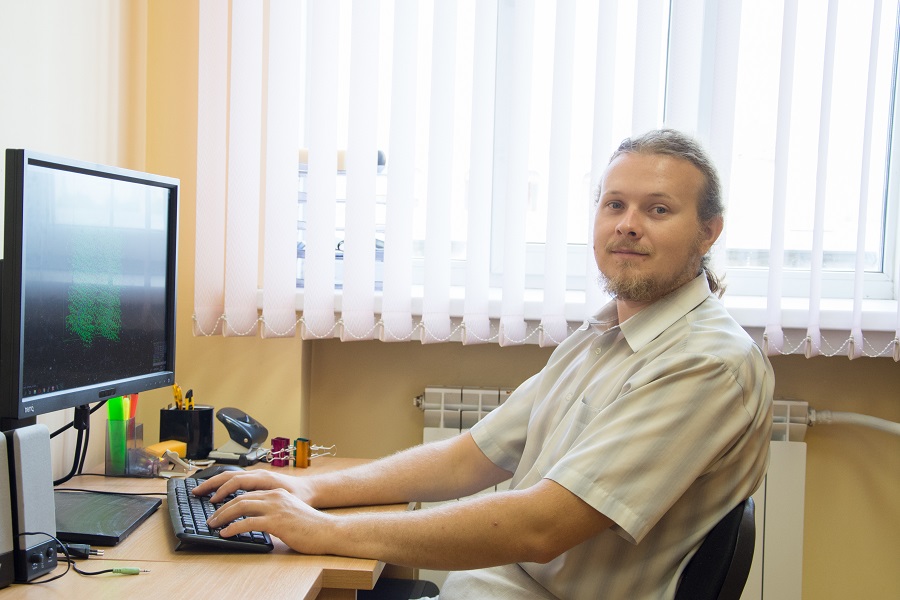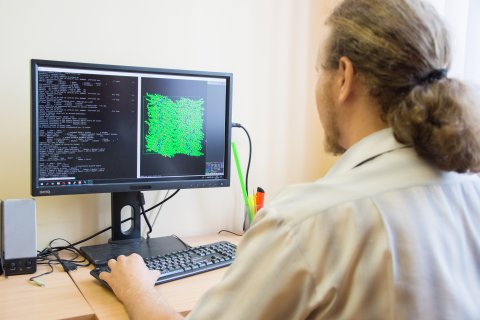South Ural State University scientists managed to create a virtual model of a multicomponent liquid crystal mixture for the first time. It shows the relationship of the physical properties of liquid crystals with their structure at the microscopic level. The obtained results will allow to create liquid crystals with the required properties in the future, which is of significant importance for their use in medicine and technology. The study was published in the highly rated Journal of Molecular Liquids (Scopus, Q1).
Liquid crystals due to their unusual physical properties and widespread use in modern technology are of deep interest to scientists and engineers. These are chemicals that, in a certain temperature range, can form a mesophase - an intermediate state between solid and liquid. Liquid crystals combine two opposite properties: they have the fluidity characteristic of liquids and the anisotropy of physical properties (difference in properties depending on direction) inherent in solid crystals.
Today, liquid crystals are used in liquid crystal monitors. They are based on the ability to become opaque to polarized light under the influence of an electric field. In liquid crystal displays, not pure compounds are used, but multicomponent mixtures preserving the liquid crystal state in a wide temperature range, having a relatively high spontaneous polarization and other practically important properties.
Despite all the successes in the development of liquid crystal materials, it is rather difficult to theoretically predict their properties. Scientists of the South Ural State University have proposed a method for modeling the molecular dynamics of liquid crystalline mixtures to predict their properties.

“Despite the fact that liquid crystals have been actively used in electronics since the 70s, scientists until now have little understanding of what happens in them at the level of packing of individual molecules. Unlike gases and solids, the phenomenon of liquid crystals can merely be studied experimentally, because the analytical apparatus of physics does not cope effectively with the partial ordering of matter. Applied research in industry has achieved significant results, but in theory there are many unresolved problems. We have developed a virtual model of a multicomponent mixture, which is consistent with experimental studies,” says one of the authors of the study, Gennady Makarov, senior researcher at the laboratory for multiscale modeling of multicomponent functional materials at SUSU, candidate of chemical sciences.
Currently, color LCD screens are used in cell phones, monitors and televisions. They have a small thickness, low power consumption, high resolution and brightness. In the future, a theoretical study of electro physical properties and the results obtained will expand their application, in particular, to create energy-efficient optical shutters.

The experimental part of the study was carried out at the international molecular electronics laboratory of SUSU under the direction of Fedor Podgornov, candidate of physical and mathematical sciences. To design a virtual model of the liquid crystal mixture, the capacities of the supercomputer center of the South Ural State University were used.




